Color and Pleochrosim
Color
When we talk about the color of a mineral
in thin section, we are referring to color seen when viewing the
mineral in plane polarized (PP) light.
Minerals may be colorless,
weakly colored or strongly colored.
Often, the color of a mineral in hand specimen and in thin section
have the same hue (e.g., red minerals will be red in both views,
green minerals will be green in both views, etc.), although the
color in thin section is typically not as intense. Sometimes color
in thin section does not match color in hand specimen, especially
for dark colored minerals. For example, hornblende is generally
black when viewed in hand specimen. In thin section it is likely
to appear in various shades of brown or green. The different coloration
in hand specimen and thin section is the result of two things.
First, the color seen in thin section is the color of transmitted
light; the color in hand specimen is the color of reflected light.
Second, we use plane polarized light when viewing minerals in
thin section.
If a mineral grain is heterogeneous (is
not the same composition everywhere), it may exhibit patchy or
concentric color zonation (different colors in different
places).
Pleochrosim
Because we use polarized light when viewing
minerals in thin section, the color we see may vary as we rotate
the microscope stage. Minerals that change color with stage rotation
are said to have pleochroism. Pleochrosim is a consequence
of the fact that, for anisotropic minerls, different colors of
polarized light are absorbed depending on the direction of light
vibration. Some minerals show extreme pleochroism, others show
more subtle pleochroism, and some show none at all.
Below are some examples of minerals that
exhibit quite pronounced pleochroism. All photos shown on
this page are in PP light.
|
Sapphirine
Sapphirine is a remarkable blue mineral
that often shows extreme pleochroism. These views are of the
same part of a thin section, but the stage was rotated, so they
are 90o different in orientation. The sapphirine goes
from deep blue on the left to a lighter blue on the right.
Orthopyroxene is also present. It has a light pinkish or orange
color on the left and is greenish on the right. |
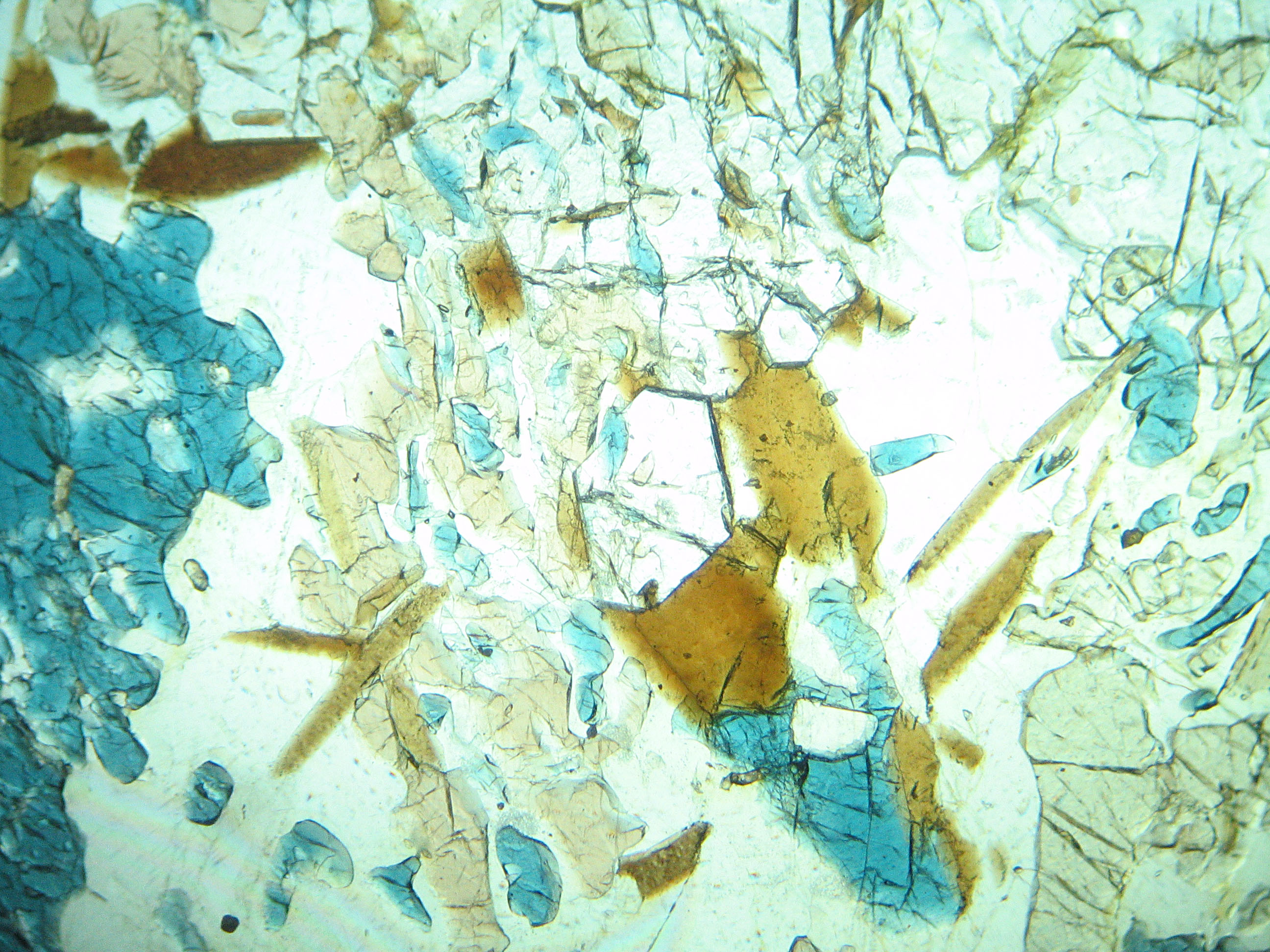 |
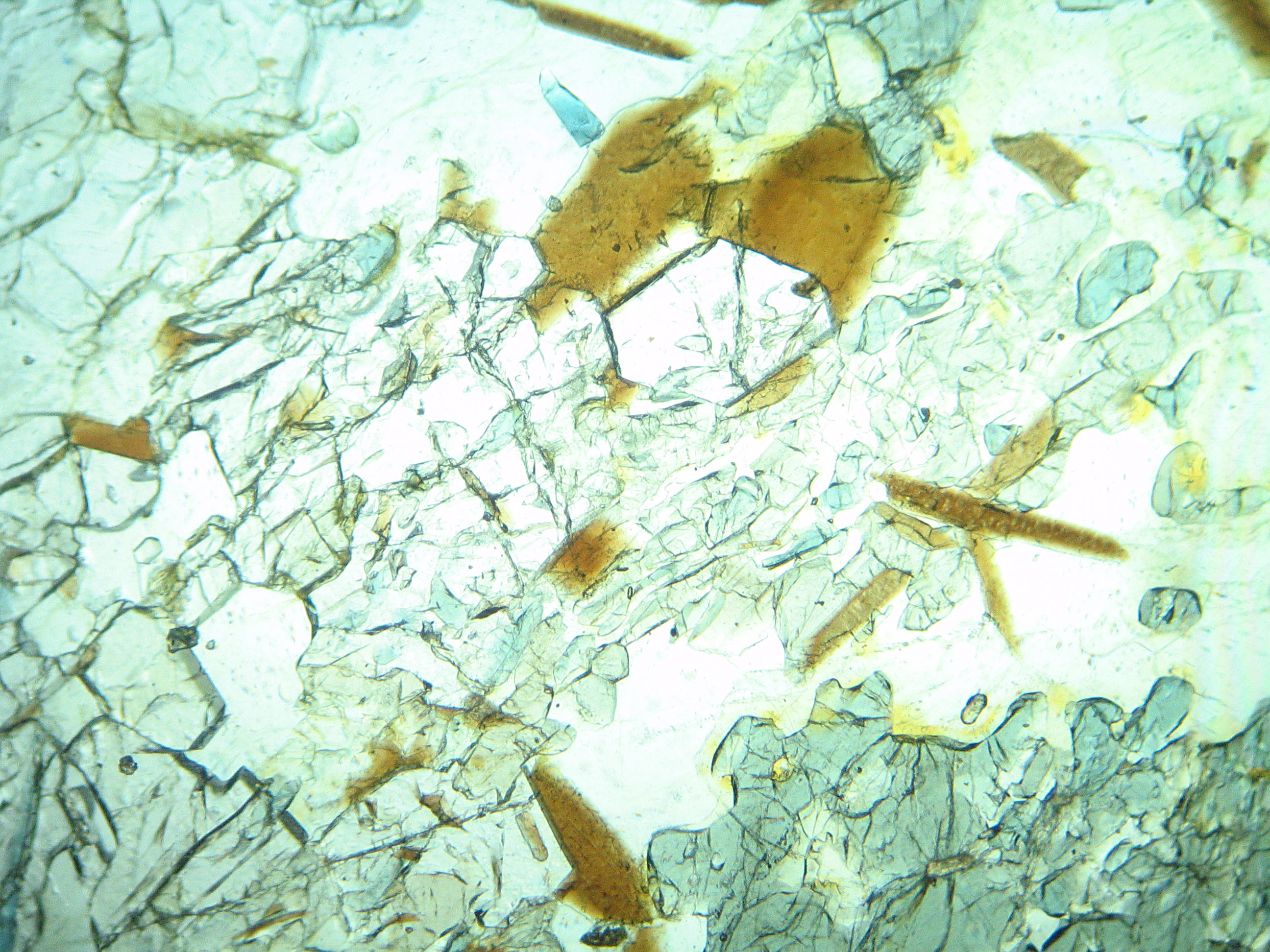 |
|
Orthopyroxene
The large grain in the center of these
views is orthopyroxene. It is pinkish on
the left, but after 90o stage rotation appears green
on the right. Pink to green pleochroism is one of the properties
that helps distinguish orthopyroxene from
clinopyroxene. The pleochroism shown here
is extreme; it is not so pronounced for most orthoyroxenes. |
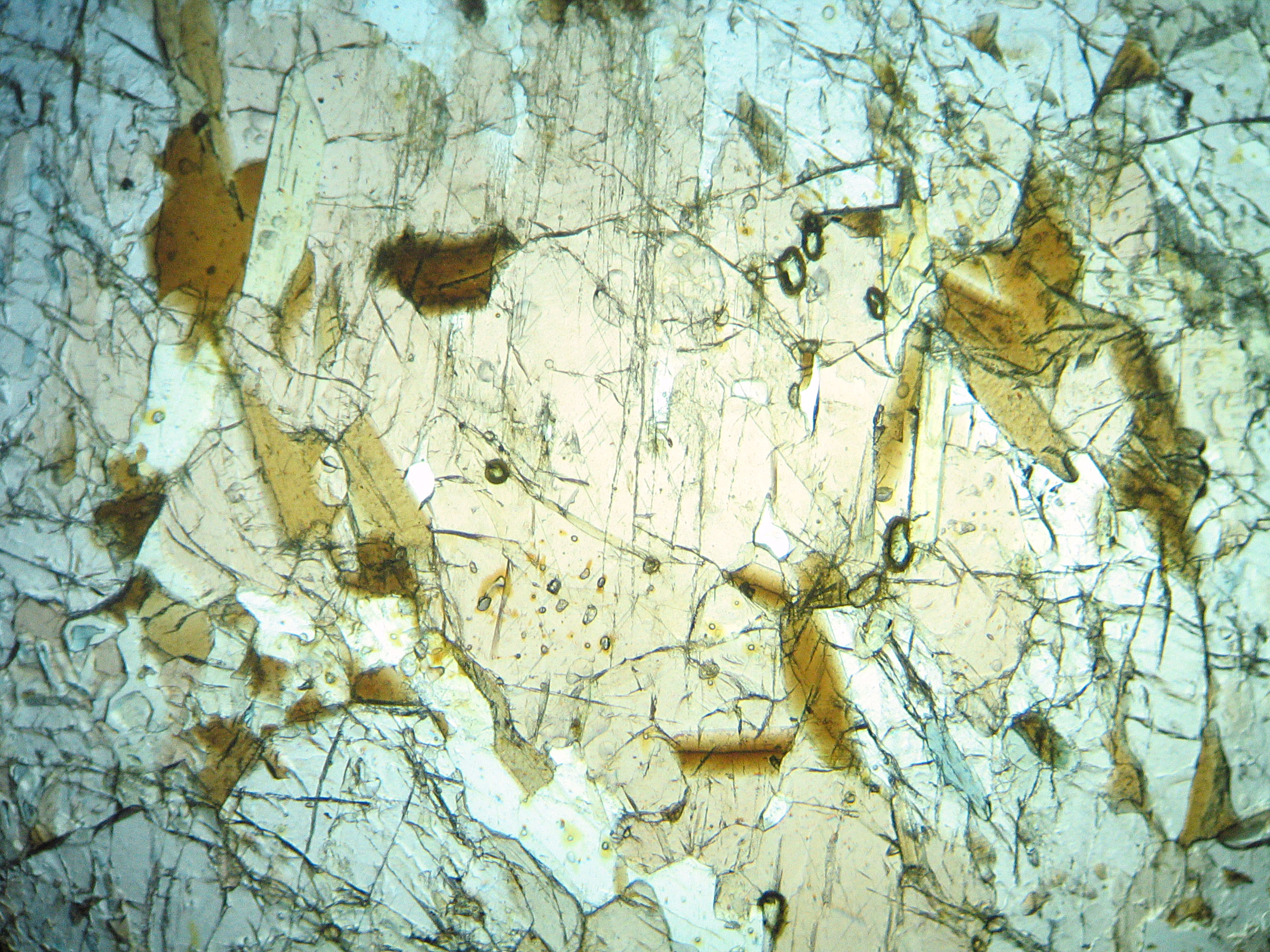 |
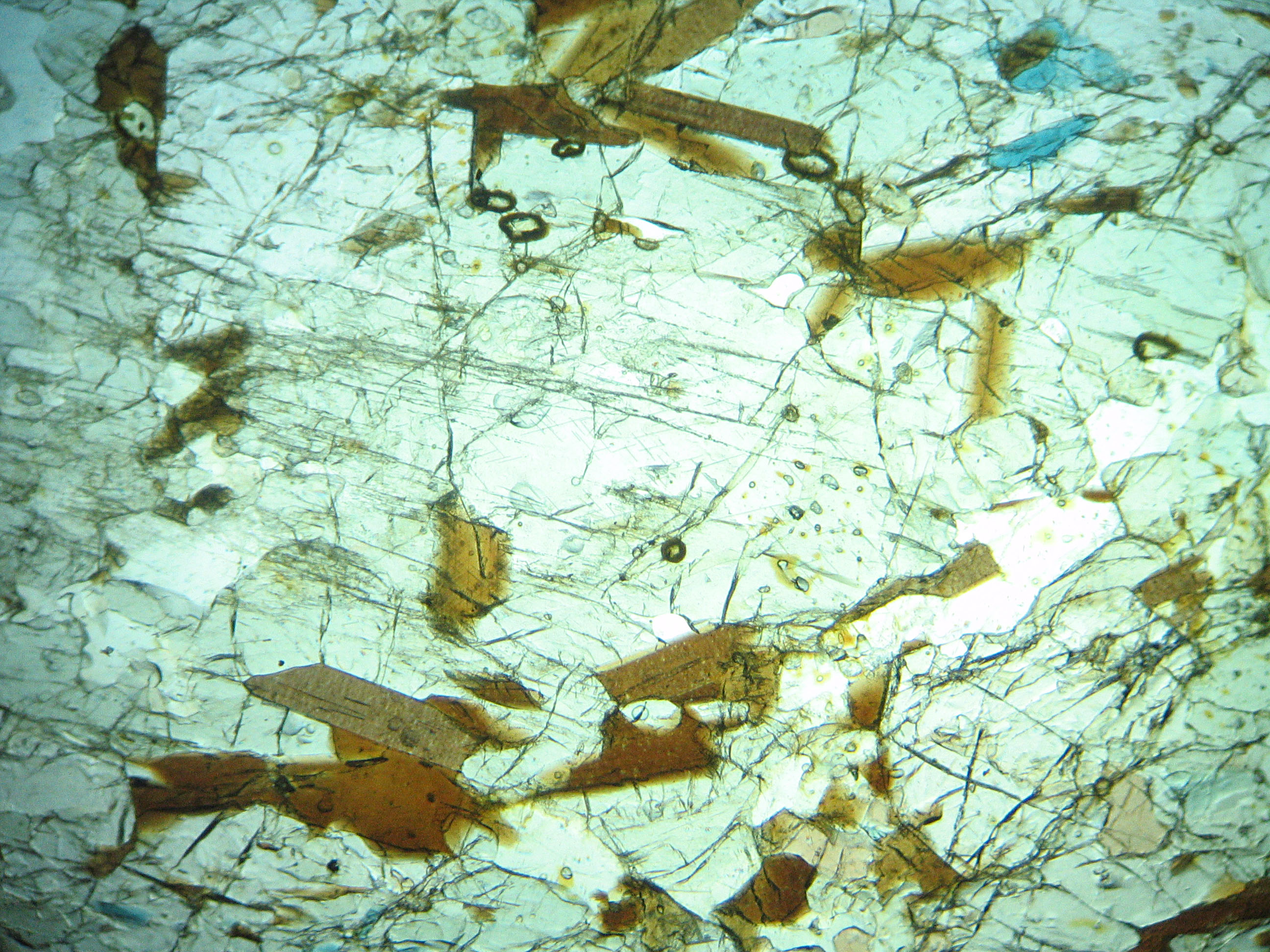 |
|
Biotite
This view shows biotite,
pleochroic from tan to brown. The two views show the effect of
a 90o stage rotation. This is typical color and pleochroism
for biotite, but some biotites are pleochroic in other colors,
including green and red. |
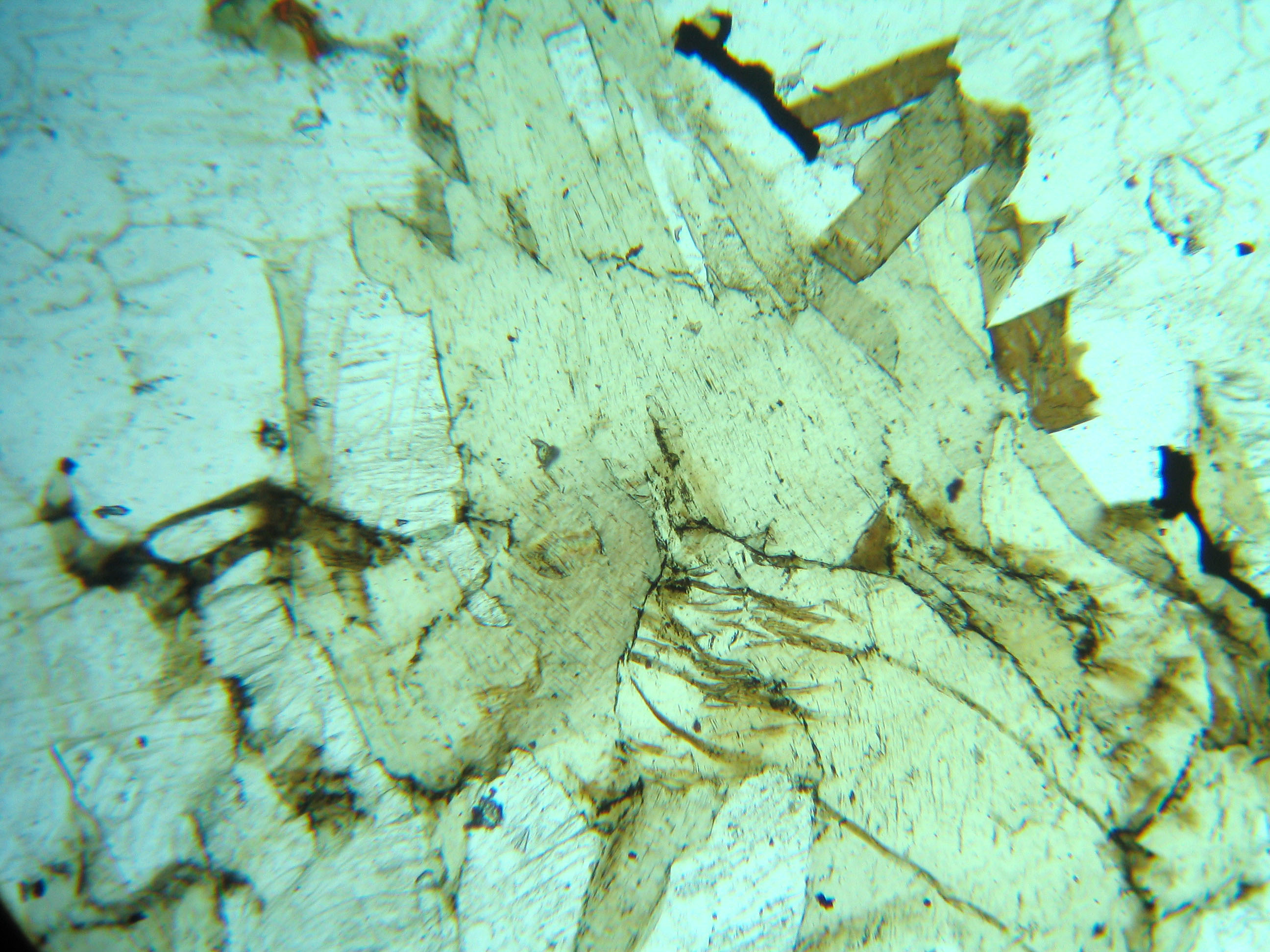 |
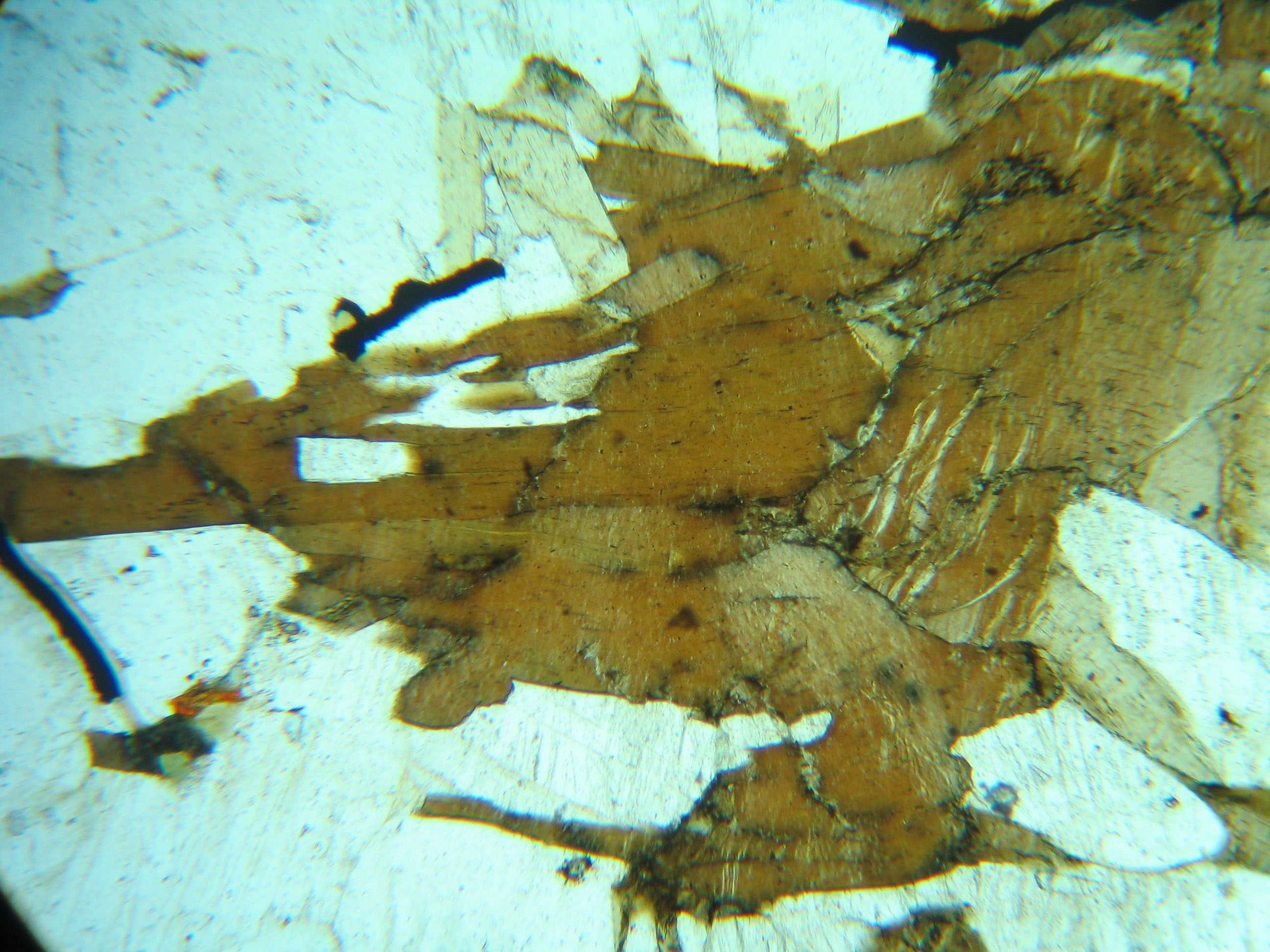 |
|
Hornblende
This hornblende
shows pleochroism from green to blue-green. Hornblende is generally
pleochroic, often in shades of green, blue, brown, and less commonly
red or yellow. This example is in shades of green only, but brown
hues are generally more common. |
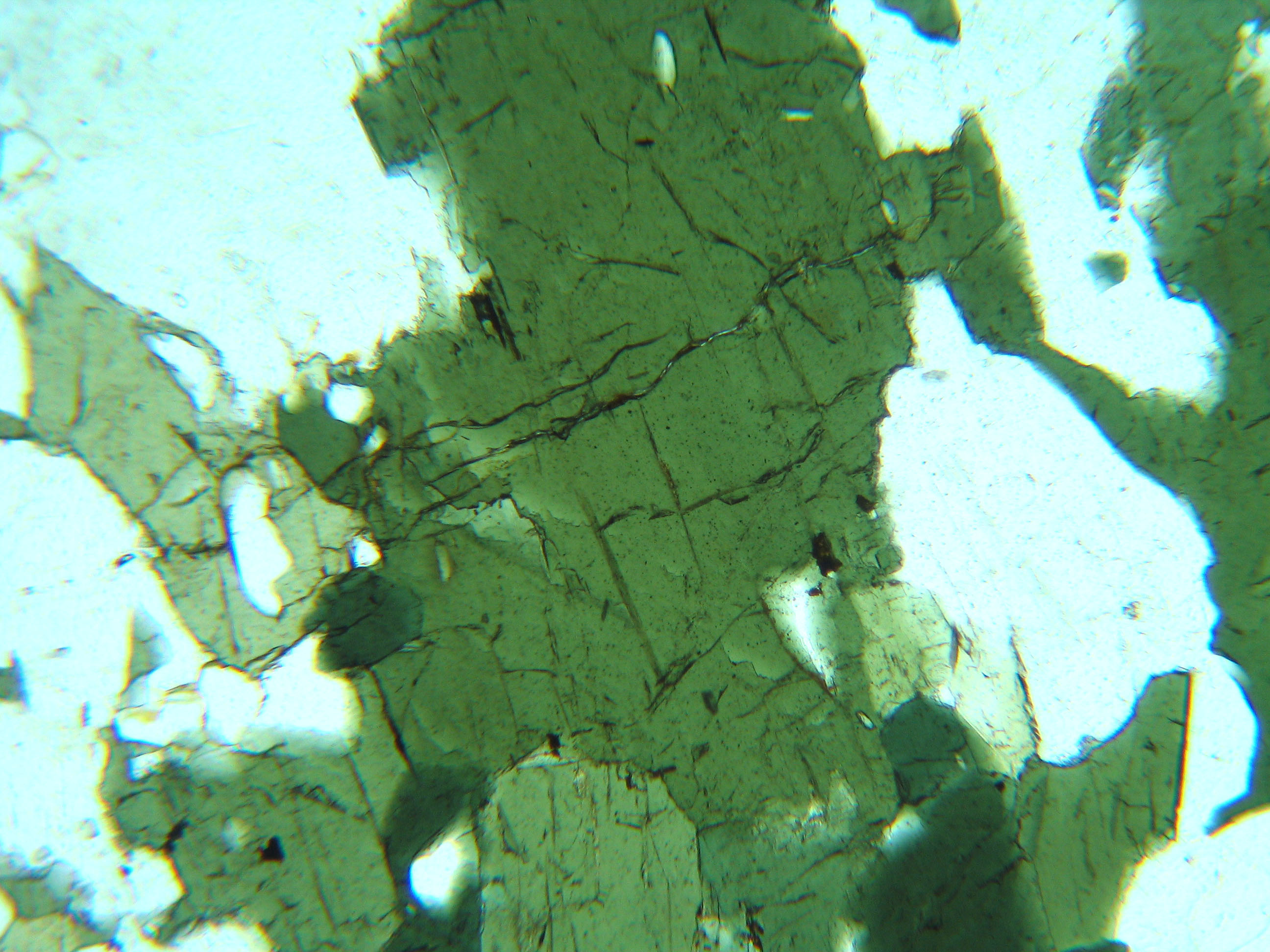 |
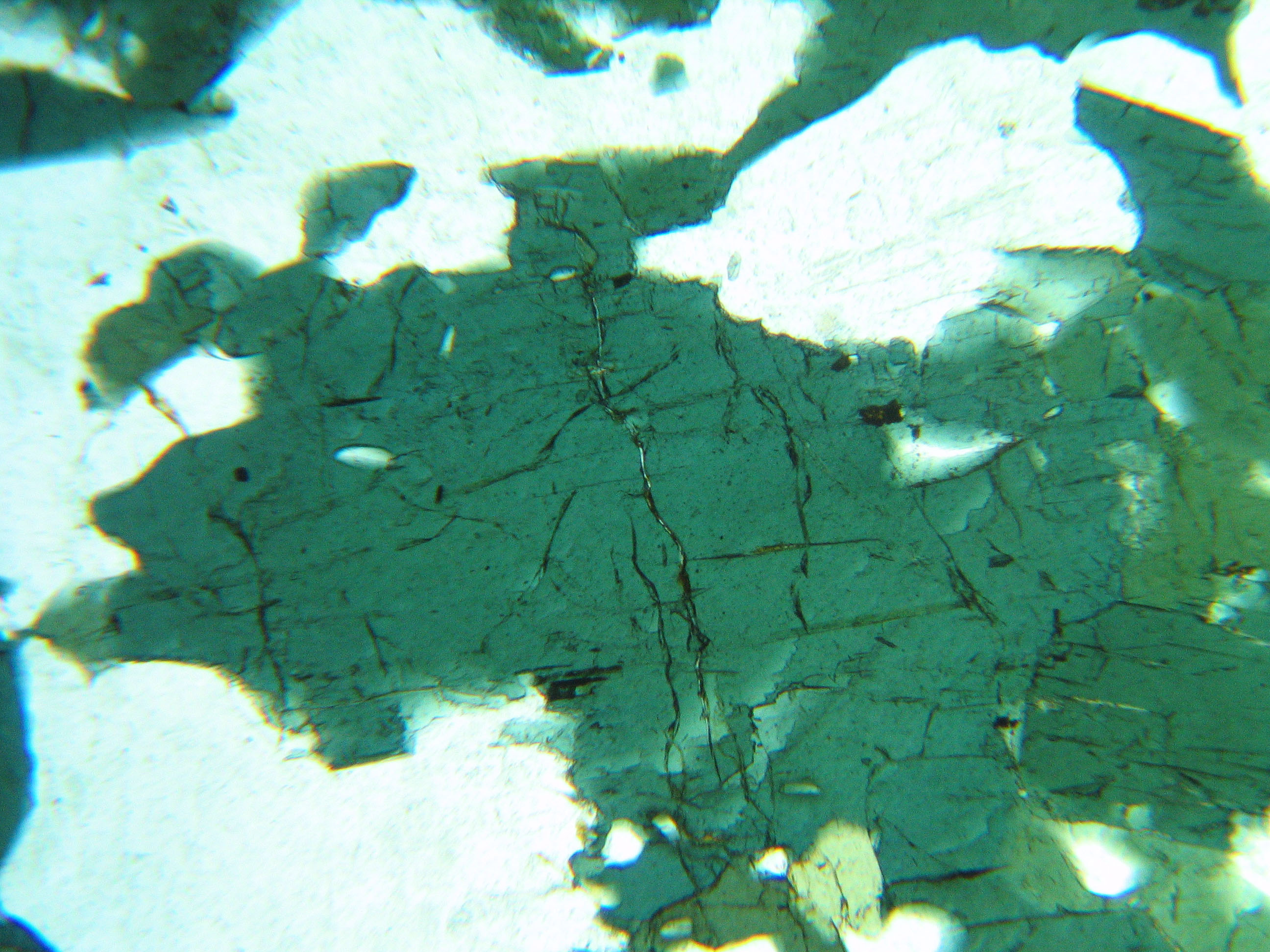 |









